 |
BusTalk
A Community Discussing Buses and Bus Operations Worldwide!
|
| View previous topic :: View next topic |
| Author |
Message |
Q65A
Age: 66
Joined: 17 Apr 2007
Posts: 1769
Location: Central NJ
|
 Posted: Mon Mar 31, 2008 7:52 pm Post subject: Historical Buses of NYC: Postwar Twins Posted: Mon Mar 31, 2008 7:52 pm Post subject: Historical Buses of NYC: Postwar Twins |
 |
|
Although its name is all but forgotten today, Twin Coach Corp. was a historically important U.S. bus manufacturer. Founded by Frank and William Fageol at Kent, Ohio in 1927, the firm manufactured transit and intercity buses until it was acquired by Flxible in 1952. They also produced trolley coaches during the same timeframe. The Fageol brothers were energetic inventors who had created the Fageol Safety Coach in the early 1920’s. Although Twin Coach would never match the sales of rivals GM and Mack, its engineering often was quite innovative. The company’s name was derived from a bus design that used a pair of engines. Twin pioneered rear-engine transit buses in 1935, and in the same year Twin also became the first U.S. bus manufacturer to build a transit bus with a factory-installed diesel engine. In 1938, Twin attracted publicity when it built a 60-foot, 4-axle articulated diesel-electric hybrid transit bus for the Baltimore Transit Company. Numerous Twins were sold to various NYC bus operators in the 1930’s and early 1940’s. These operators included Brooklyn Bus Corp., North Shore Bus Co., Surface Transportation System, Jamaica Buses Inc., Steinway Omnibus Corp., and Queens-Nassau Transit Lines. Except for ST, who purchased a single diesel powered Model 35-D in 1954 (STS #6000) none of these operators of pre-war Twins bought postwar Twins. The all-time rosters of Green Bus Lines and Triboro Coach Corp. indicate that these operators did not own any Twins. Not surprisingly, no postwar Twins were bought by FACCO and NYCO (both loyal Yellow Coach/GM customers) or Avenue B & East Broadway Transit (a perennial Mack devotee). Unquestionably, the largest operator of Twin Coaches in the NYC area was the NYC Board of Transportation. When the BOT was formed in 1940, it acquired 212 used Twins from Brooklyn Bus Corp. The following year, the BOT purchased 250 new Twins, of which 60 units (BOT #’s 1300-1359) were diesels. Regardless of engine type, these units used electric transmissions and were assigned to routes in Brooklyn. All 190 gas-electric Twins were repowered with Hercules diesel engines in 1945. They only lasted a few more years and were retired in 1948. Like their Brooklyn neighbors, North Shore Bus Co. in Queens owned a large 219-unit fleet of Twin Coaches built between 1930 and 1946. When the City of New York acquired North Shore In March 1947, the BOT took in the entire fleet of North Shore Twins. In the same year, the BOT purchased 125 Twin Coach Model 41-S transit buses (BOT #’s 1400-1524). They also placed an additional order for 180 larger Twin Coach Model 44-S’s from 1947 to 1948 (BOT #’s1525-1575; 1700-1829). All 305 postwar Twins were equipped with underfloor-mounted gas engines and Spicer torque converters. They were not especially large or heavy buses: the Model 41-S was 32’11.5” long and weighed 14,850 pounds, while the Model 44-S was 34’10” long and weighed 15,570 pounds. They used a B.F. Goodrich “Torsilastic” torsion bar suspension, which also was used on postwar Flxible parlor buses and on all Eagle buses. All BOT Twins were 96” wide. They used 6-hole 10-stud cast steel disc wheels and were delivered in the standard grey-over-green BOT livery. Postwar Twins had several distinctive styling features that set them apart at a glance from contemporary GM’s and Macks. Two-panel sliding doors were used front and rear (as compared to 4-panel jackknife doors used on most transit buses of that period). The Model 41-S used a small side destination sign positioned directly over the entrance door header; BOT #’s 1400-1499 also had a small circular “Next Bus” lamp mounted below the lower edge of the right-hand windshield. Later Model 41-S’s and all Model 44-S’s lacked this lamp, and used side signs mounted more conventionally at the top of the first curbside passenger window. As with Mack C-50DT’s, postwar Twins had a fluted horizontal aluminum trim panel that encircled nearly the entire bus. Standee windows were not used; large side window sashes dropped vertically into bodyside pockets. Perhaps no feature is more associated with postwar Twins than the unique 6-panel front windshield assembly. Consisting of two large upper main windshield panel, two smaller lower windshield panels, and two triangular side window panels, this design later was used on all Flxible transit buses until 1978. BOT’s postwar Twins used dual wipers mounted on the windshield header, a feature sometimes used on certain models of school buses but rarely seen on modern transit buses. Such wipers were not used on any other postwar BOT/NYCTA buses. The BOT Twins initially were assigned both to Queens and Brooklyn depots, but Queens buses (#’s 1525-1575) were moved to Brooklyn by 1949. Gas-powered buses were considered undesirable in the mid 1950’s, and the BOT/NYCTA Twins were scrapped beginning in 1956. No examples were preserved. Twin seemed to be ahead of its time, and was an innovator in many ways. Curiously, a Twin Coach Model 58-DW “Super Twin” artic demonstrator was tested by BOT on certain Brooklyn routes in late 1947. The 60-foot unit also had dual engines. The BOT elected not to purchase the big bus, and it was returned to Twin unsold. The NYCTA would wait another 50 years before they began to purchase artics (the New Flyer D60HF’s arrived in NYC in 1997).
As a historical postscript, Twin delivered their last new transit bus in October 1951. They signed a joint business agreement with Flxible in September 1952, which enabled Flxible to enter the transit bus market for the first time (up to that point, Flxible had manufactured only parlor buses plus miscellaneous transportation and industrial equipment). Buses built under this agreement after 1953 were branded as “Flxible-Twin Coach”. They used a body design that was similar to that used by GM and Mack Old Look transits, but with the distinctive 6-panel front windshield design. NYC transit operators did not acquire any of these buses. Of the 1,034 units built between 1953 and 1960, 900 were purchased by the Chicago Transit Authority; many of the CTA buses had propane-fueled engines. The Flxible-Twin Coach nameplate actually was used on early New Look Flxible transits. This brand name eventually was shortened to “Flxible” in 1963, and the venerable Twin Coach name finally disappeared into bus history books. |
|
| Back to top |
|
 |
ripta42
Site Admin
Age: 45
Joined: 15 Apr 2007
Posts: 1035
Location: Pawtucket, RI / Woburn, MA
|
 Posted: Mon Mar 31, 2008 9:09 pm Post subject: Re: Historical Buses of NYC: Postwar Twins Posted: Mon Mar 31, 2008 9:09 pm Post subject: Re: Historical Buses of NYC: Postwar Twins |
 |
|
| Q65A wrote: | | This brand name eventually was shortened to “Flxible” in 1963, and the venerable Twin Coach name finally disappeared into bus history books. |
Not entirely true; the Twin Coach name was resurrected on a small bus built by Highway Products from 1968 to 1975. |
|
| Back to top |
|
 |
Mr. Linsky
BusTalk's Offical Welcoming Committee

Joined: 16 Apr 2007
Posts: 5071
Location: BRENTWOOD, CA. - WOODMERE, N.Y.
|
 Posted: Tue Apr 01, 2008 2:03 am Post subject: Posted: Tue Apr 01, 2008 2:03 am Post subject: |
 |
|
Bob,
Another great essay - thanks so much for sharing.
Just a few photos below of prewar Twins owned by New York operators.
Photos borrowed for educational purposes only.
Mr. Linsky - Green Bus Lines, Inc., Jamaica, NY
Jamaica Buses #10
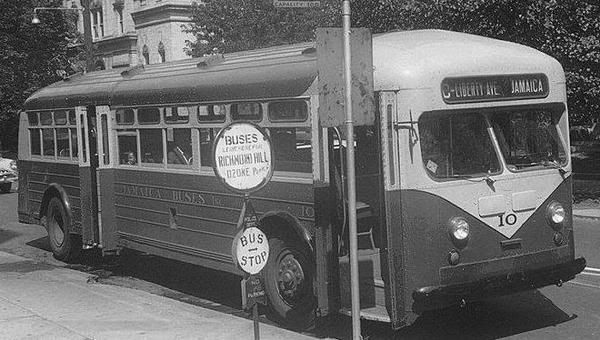
Brooklyn & Queens Transit Corporation # 1001
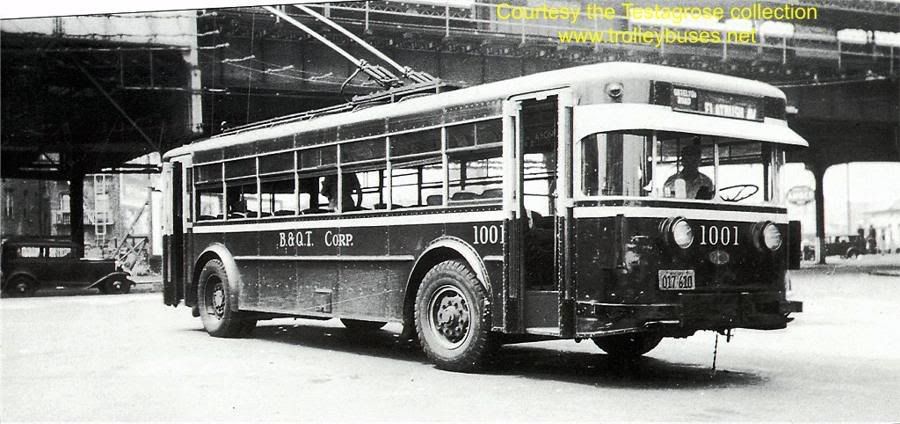
Jamaica Buses # 201
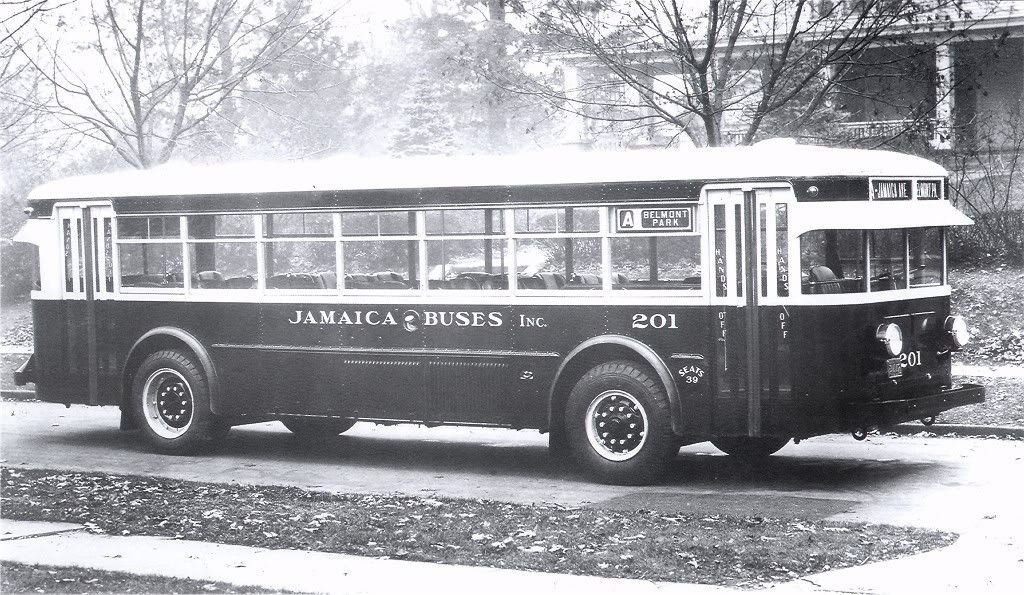
Surface Transportation # 3827
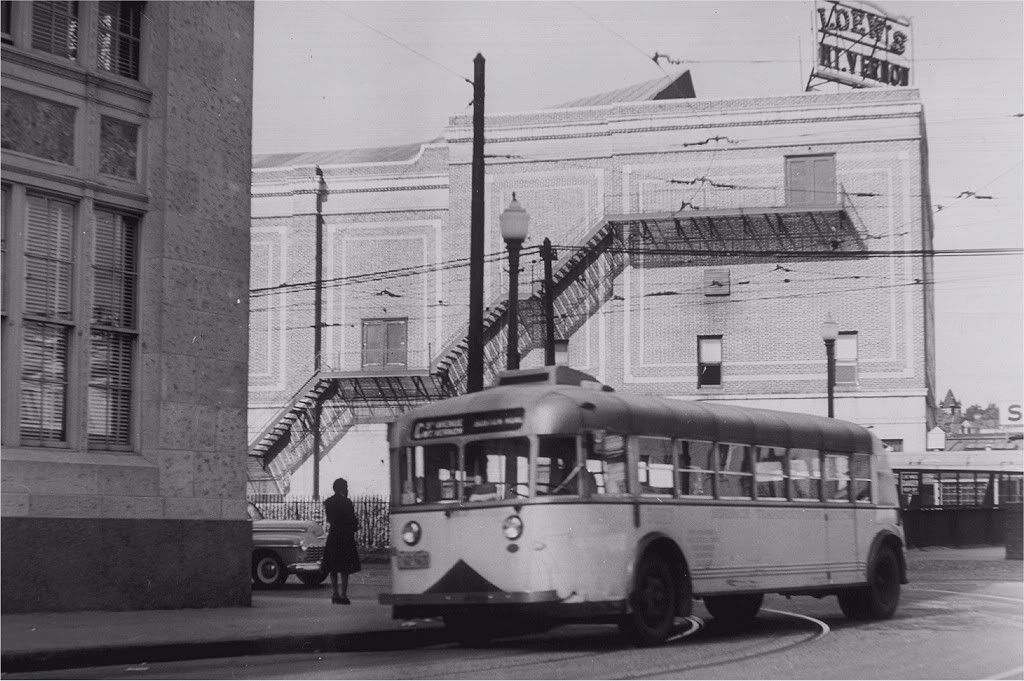 |
|
| Back to top |
|
 |
Cyberider

Joined: 27 Apr 2007
Posts: 501
Location: Tempe, AZ
|
 Posted: Tue Apr 01, 2008 8:58 am Post subject: Posted: Tue Apr 01, 2008 8:58 am Post subject: |
 |
|
| Interesting story, Bob, and photos, Mr. L! I remember the postwar Twins in Cleveland where I lived until the ripe old age of three years and nine months! The distinctive windshields and rear windows were what stuck in my mind. |
|
| Back to top |
|
 |
Mr. Linsky
BusTalk's Offical Welcoming Committee

Joined: 16 Apr 2007
Posts: 5071
Location: BRENTWOOD, CA. - WOODMERE, N.Y.
|
 Posted: Tue Apr 01, 2008 1:37 pm Post subject: Posted: Tue Apr 01, 2008 1:37 pm Post subject: |
 |
|
Thanks Dave - always a pleasure to help out.
Now for some interesting post war Twins from our own BusTalk Gallery;
Enjoy!
Mr. Linsky - Green Bus Lines, Inc., Jamaica, NY
A 1947 Twin Coach Model 41-S fleet #157 originally built for North Shore Bus Company but delivered to New York City after takeover
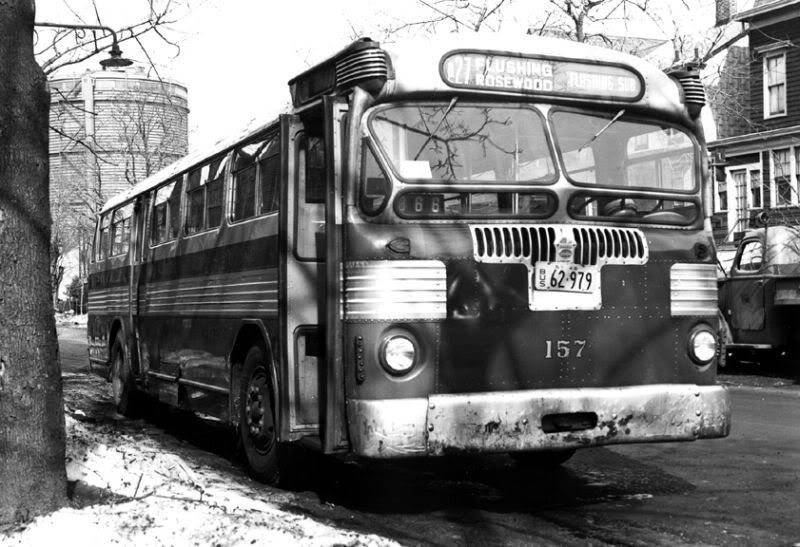
New York City Twin Coach Model 45-S fleet # 1811

New York City Twin Coach Model 45-S fleet # 1568
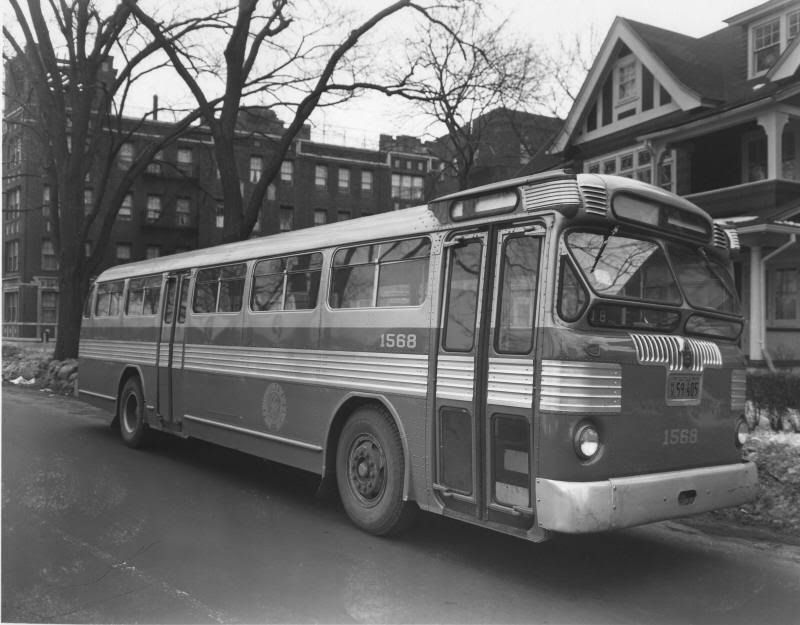 |
|
| Back to top |
|
 |
Cyberider

Joined: 27 Apr 2007
Posts: 501
Location: Tempe, AZ
|
 Posted: Tue Apr 01, 2008 1:46 pm Post subject: Posted: Tue Apr 01, 2008 1:46 pm Post subject: |
 |
|
| Thanks for the great photos, Mr. Linsky. They were the most modern-looking buses of their day and actually made the GM Old Looks look old-fashioned! |
|
| Back to top |
|
 |
Mr. Linsky
BusTalk's Offical Welcoming Committee

Joined: 16 Apr 2007
Posts: 5071
Location: BRENTWOOD, CA. - WOODMERE, N.Y.
|
 Posted: Tue Apr 01, 2008 1:58 pm Post subject: Posted: Tue Apr 01, 2008 1:58 pm Post subject: |
 |
|
Dave,
I would agree!
Notice that the post war Twins from 1947 have door configurations that were only adopted by GM on their 'New Looks' twelve years later!
Mr. 'L' |
|
| Back to top |
|
 |
Q65A
Age: 66
Joined: 17 Apr 2007
Posts: 1769
Location: Central NJ
|
 Posted: Tue Apr 01, 2008 7:55 pm Post subject: Re: Historical Buses of NYC: Postwar Twins Posted: Tue Apr 01, 2008 7:55 pm Post subject: Re: Historical Buses of NYC: Postwar Twins |
 |
|
| ripta42 wrote: | | Q65A wrote: | | This brand name eventually was shortened to “Flxible” in 1963, and the venerable Twin Coach name finally disappeared into bus history books. |
Not entirely true; the Twin Coach name was resurrected on a small bus built by Highway Products from 1968 to 1975. |
You are absolutely correct. Thanks for the heads-up; you really do know your bus history!!!
I went down to my basement a few minutes ago and dusted off my copy of The Illustrated Encyclopedia of American Trucks and Commercial Vehicles (1996: edited by Albert Mroz; published by Krause Publications). Here's what this refeence had to say about Highway and Twin Coach:
"Highway Products, Inc. (1960-1975) of Kent, Ohio, was an outgrowth of the Twin Coach Company as well as Fageol-Twin Coach gasoline engine manufacturing along with the sales network for Leyland-Fageol diesel engines during the 1950's...For 1968, the company unveiled a 25-passenger bus that had a Chrysler V-8 engine mounted in the rear using an automatic transmission. Federal grant funds helped the development of this project. The new bus was called a Twin Coach, although its real connection was more geographic than by pedigree. In 1969, a 29-passenger model was also introduced. The first production series used a Perkins diesel engine. Subsequent to 1970, the buses used Detroit Diesel 4-53 engines and were built using these engines from then on. The first series also used hydraulic brakes, whereas after 1970 they were replaced by air brakes. In 1971, full air suspension was incorporated. The year 1974 was a poor one for Highway Products due to the continuation of production at guaranteed prices during a period when materials and labor became much more costly in a short time. When creditors refused additional financing, production stopped in 1975 for three months. To fulfill existing obligations, Highway Products resumed production in October 1975 and at that time delivered the last Twin Coach buses. Altogether 900 buses were built over eight years of manufacturing." |
|
| Back to top |
|
 |
Mr. Linsky
BusTalk's Offical Welcoming Committee

Joined: 16 Apr 2007
Posts: 5071
Location: BRENTWOOD, CA. - WOODMERE, N.Y.
|
 Posted: Wed Apr 02, 2008 12:37 am Post subject: Posted: Wed Apr 02, 2008 12:37 am Post subject: |
 |
|
Let's not forget about the very early days of Twin Coach and its association with the Detroit Industrial Vehicle Company more commonly known as 'Divco'.
Divco was probably the largest manufacturer of retail route delivery vehicles in the country. In fact, there was a time when almost 90 percent of door to door sales of milk and milk products were vended with Divcos.
What made Divco so unique in its class was its combination 'stand-sit' drive feature with auxiliary accelerator and brake controls built into the column shift lever.
The very earliest models even allowed the driver control while standing on the running board!
The creation of the Divco-Twin Truck Company is linked to the history of the Twin Coach Company founded by William and Frank Fageol.
Twin Coach began the manufacture of house to house delivery vehicles in 1929.
These trucks, which bore resemblance to a small bus and to the Model 'B' Divcos, had unit body and frame construction with sliding doors and made the company a logical partner for Divco who was seeking financial support in the early thirties.
The name 'Divco-Twin' was adopted in 1934 and remained as the company trademark until immediately after the war when 'Twin' was dropped.
For a brief period Divco became associated with Wayne-Works - a maker of step vans and school bus bodies to stave off what became fierce competition from the likes of Chevrolet, Ford and Dodge.
The last of the Divcos rolled off the line in 1986 closing the book on the illustrious 60 year history of 'America's Favorite Milk Truck'!
Photos below courtesy the Divco Club of America.
Mr. Linsky - Green Bus Lines, Inc., Jamaica, NY
1933 Twin Coach
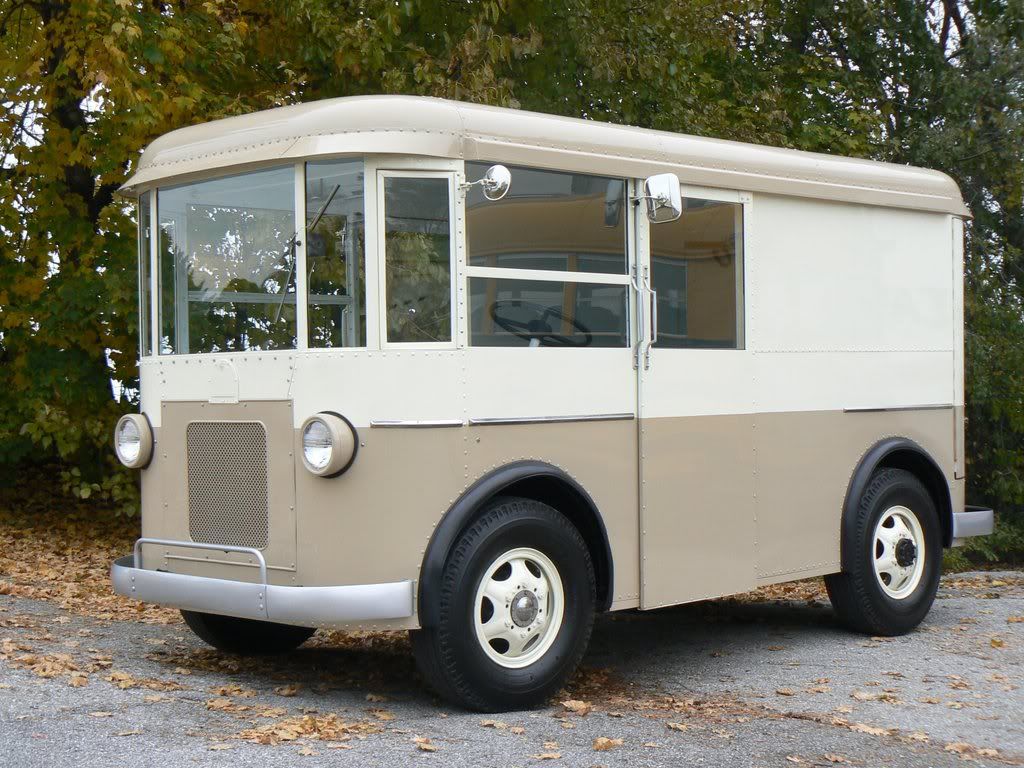
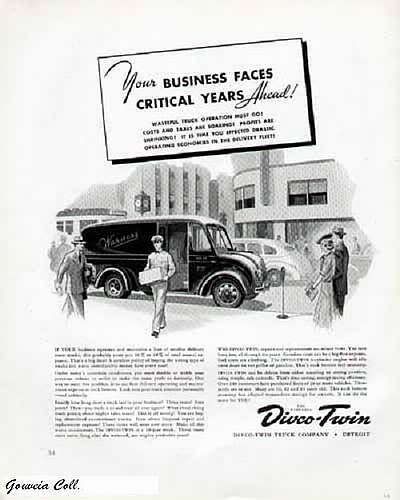 |
|
| Back to top |
|
 |
Cyberider

Joined: 27 Apr 2007
Posts: 501
Location: Tempe, AZ
|
 Posted: Wed Apr 02, 2008 8:56 am Post subject: Posted: Wed Apr 02, 2008 8:56 am Post subject: |
 |
|
| Great information, Mr. Linsky! I never realized there was an association between Twin and Divco. They were my favorite milk trucks and I loved the sound they made. I always wondered whose engines and transmissions they used. Sounded just like my first vehicle, a '41 Dodge military truck with a flathead six and a "crashbox" transmission. |
|
| Back to top |
|
 |
Mr. Linsky
BusTalk's Offical Welcoming Committee

Joined: 16 Apr 2007
Posts: 5071
Location: BRENTWOOD, CA. - WOODMERE, N.Y.
|
 Posted: Wed Apr 02, 2008 1:23 pm Post subject: Posted: Wed Apr 02, 2008 1:23 pm Post subject: |
 |
|
Dave,
Divco had a long association with Continental Engine Company and used their power plants almost exclusively.
In fact, in later years they offered a Continental 101 horsepower 2 cycle Diesel as an option.
Before Twin Coach entered the picture, Divco was actually owned by Continental with their legal name being
Continental-Divco Co., Detroit, Mich. 1934-1935.
In 1936 through a stock manipulation, Divco was divested from Continental Motors, and merged with the truck business of the Twin Coach Co. of Kent, Ohio, who were making a similar vehicle.
Under direction of the Fageol family the merged companies and products were known as Divco-Twin until the Twin Coach name was dropped during WWII in 1944. After that the firm was simply known as the Divco Corporation (It was the financial setbacks during the relationship with Continental that prompted the sale to Twin Coach).
I have to tell you that while these Divcos were funny looking they were probably among the toughest trucks of their class ever built! (a few samples below).
Long live Divco!
Mr. Linsky - Green Bus Lines, Inc. Jamaica, NY
1926 Model 'A' Divco
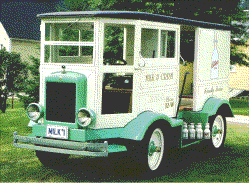
1929 Model 'G' Divco
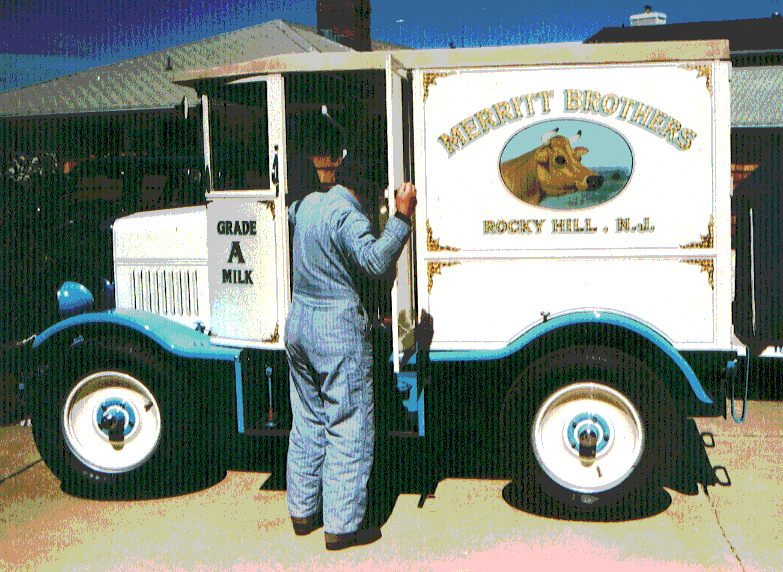
The revolutionary DIVCO-TWIN 1939 MODEL'U'
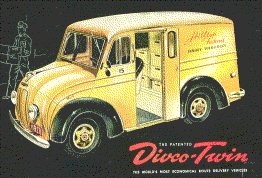 |
|
| Back to top |
|
 |
Q65A
Age: 66
Joined: 17 Apr 2007
Posts: 1769
Location: Central NJ
|
 Posted: Fri Apr 04, 2008 8:12 pm Post subject: Posted: Fri Apr 04, 2008 8:12 pm Post subject: |
 |
|
| I remember (from many years ago) the Divco "Snub Noses" operated in Queens by Dugan's Bakery (on whose site now stands QV Depot). |
|
| Back to top |
|
 |
Mr. Linsky
BusTalk's Offical Welcoming Committee

Joined: 16 Apr 2007
Posts: 5071
Location: BRENTWOOD, CA. - WOODMERE, N.Y.
|
 Posted: Fri Apr 04, 2008 11:15 pm Post subject: Posted: Fri Apr 04, 2008 11:15 pm Post subject: |
 |
|
Since I brought Divco into the discussion because of its brief relationship with Twin Coach and the fact that it played such an important role in bringing foods directly to our doors in years past, I thought you might enjoy an essay entitled 'Ye Olde Route Delivery' that I wrote some time ago for www.oldkewgardens.com.
BTW; Bob is correct concerning the Dugan's Bakery Divco fleet which was second only to Borden's, and I have included a photo of a restored Dugan's Divco courtesy of Ron K.
Mr. Linsky - Green Bus Lines, Inc., Jamaica, NY
'Ye Olde Route Delivery'
During the 1940's in Kew Gardens, NY and before the word "super" was added to the word "market", much of what reached our dinner tables was delivered by door to door route salesmen.
Of course, the most basic staples were milk and milk products (cream, butter, eggs, cheese etc.) and they were vended fresh daily by both The Borden Company and Sheffield Farms. Sheffield, on the one hand, plied the route with horse and wagon while Borden's had motorized their fleet early on. The horses eventually did Sheffield in because tending them and handling food products (which the driver was required to do) didn't sit too well with the health department! Nevertheless, their products were richer and far more wholesome then what we get today!
Baked goods came to our door by either the familiar brown Dugan's trucks or the green ones of its chief competitor Krugg. The variety of cookies, cakes, pies and breads was impressive and tasty although not of Park Avenue quality.
And who could forget the early summer evening ding-a-lings of the Good Humor ice cream truck slowly inching its way through every single street in the village? The pops were great but my favorites were the chocolate and butterscotch sundaes with their collectible pictures of movie stars under the covers (now that I think of it, that's where I must have gained all that weight when I was a kid!).
Foodstuffs were not the only products delivered door to door back then. For those who had yet to acquire genuine refrigeration or for those early refrigerators that often broke down, there was always the iceman. In this case, an elderly Italian gentleman with horse and wagon from a small plant near Hillside and Myrtle Avenues (I remember the huge iron "caliper" that he used to haul the chunks of ice into our kitchen).
Knife and scissors sharpening came to us on a once a week basis. I think I remember that it was Thursdays that we would hear the slow clanging of a gong coming from an open sided antique truck.
Before UPS became the only game in town, most of the upscale department stores in New York made shipments in their own vans. In fact, I don't think a day went by that a big red R.H. Macy truck didn't rumble through our streets delivering everything from bedding to bathroom tissue (we got most of the bathroom tissue!).
The Fuller Brush man was also a regular visitor to Kew Gardens bringing us the best brooms, mops and other floor cleaning products as did the Hoover Vacuum Company with their superb machines.
Everyone talks today about the conveniences of modern technology, but nothing was more convenient than having everything hand delivered to your door back when!
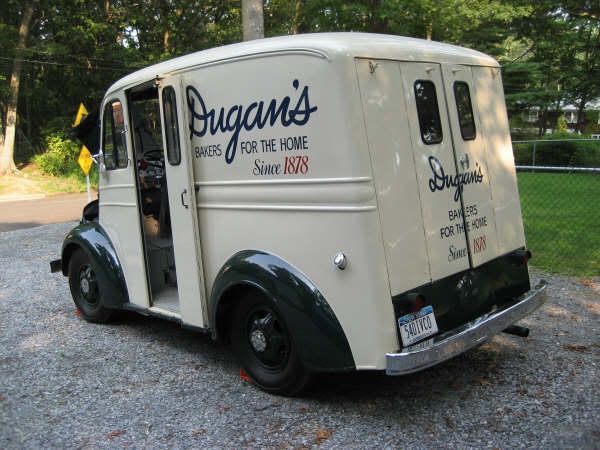 |
|
| Back to top |
|
 |
|
|
You cannot post new topics in this forum
You cannot reply to topics in this forum
You cannot edit your posts in this forum
You cannot delete your posts in this forum
You cannot vote in polls in this forum
You can attach files in this forum
You can download files in this forum
|
Powered by phpBB © 2001, 2005 phpBB Group
|















